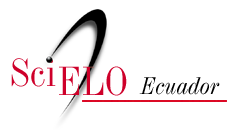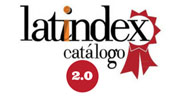Evaluación física, química y microbiológica del ensilaje de yuca con caupí y cultivo microbiano
DOI:
https://doi.org/10.29019/enfoqueute.v8n5.181Palabras clave:
ensilado, cultivo microbiano, caupí, yucaResumen
El objetivo de este trabajo fue evaluar los cambios físicos, químicos, microbiológicos, fibrosos y del ácido láctico del ensilaje de yuca con caupí y cultivo microbiano. Se utilizaron 50 kg de yuca integral (raíz, tallo, hojas), 20 kg de harina de caupí y 4 L de cultivo microbiano que contenía Lactobacillus acidophillus, Streptococcus thermophillus y Klyumyces fragilis (L-4 UCLV). Las variantes evaluadas fueron: yuca integral (Y100), yuca integral más 20% caupí (Y+C), yuca integral más 20% caupí y 8% biopreparado (Y+C+BP). El material ensilado se conservó en frascos de cristal estériles con boca ancha. Se utilizó un diseño completamente aleatorio. Se evaluaron las características fisicoquímicas, fibrosas, microbiológicas y de ácido láctico. Durante 18 meses, los contenidos de materia seca, proteína cruda y verdadera, ácido láctico y la viabilidad microbiana fue mayor (P<0.05) en el tratamiento Y+C+BP a partir de los dos meses hasta el final. La fibrosidad y el pH del ensilaje fue menor (P<0.05) al final del estudio en el tratamiento Y+C+BP. Se concluye que con la inclusión del cultivo microbiano en el ensilaje de yuca con caupí se logra conservar las propiedades fisicoquímicas y microbiológicas por 18 meses; asimismo, los valores de la materia seca, proteína cruda y verdadera y ácido láctico se mejoran.
Descargas
Referencias
Ali, M., Cone, J.W., van Duinkerken, G., Klop, A., Kruisdijk, J., Blok, M.C., Bruinenberg, M., y Hendriks, W.H. (2014). “Relationship between chemical composition and in situ rumen degradation characteristics of grass silages in dairy cows”. NJAS-Wageningen Journal of Life Sciences, 70,9-15.
AOAC. (2012). “Official methods of analysis, Association of official analytical chemist 19th edition”, Washington D.C., USA.
Conway, E.J. (1957). Microdiffusion Analysis and Volumetric Error. 4th ed. Crosby Lockwood and Son, London, Engl.
Dadvar, P., Dayani, O., Mehdipour, M., y Morovat, M. (2015). Determination of physical characteristics, chemical composition and digestion coefficients of treated lemon pulp with Saccharomyces cerevisiae in goat diet. Journal of Animal Physiology and Animal Nutrition 99(1):107–113.
Danelon, J.L., D’Alesio, M., Barletta, L., Allocati, P.A., Wawrzkiewicz, M., Ceballos, E., Colatto, C., y Victoria, D. (2010). “Ensilaje de alfalfa suplementado con distintos concentrados energéticos para alimentar cabras lecheras”. Asociación Latinoamericana de Producción Animal, 18(1-2), 17-26.
del Rio, S,. Heguy, J.M., Lago, A. (2010). “Feed management practices on California dairies”. Journal of Dairy Science, 93 (Suppl.1), 773.
Der Bedrosian, M.C., Nestor, K.E., y Kung, L. (2012). “The effects of hybrid, maturity, and length of storage on the composition and nutritive value of corn silage”. Journal of Dairy Science, 95:5115–5126.
Duncan, D.B. (1955). “Multiple range and multiple F tests”. Biometrics 11:1.
Fernández-Herrero, A., Tabera, A., Agüeria, D., y Manca, E. (2013). “Obtención, caracterización microbiológica y físicoquímica de ensilado biológico de anchoíta (Engraulis anchoíta)”. REDVET - Revista electrónica de Veterinaria, 14(2).
Guglielmo, S., Proietti, S., Moscatello, S., Stefanoni, W., y Battistelli, A. (2015). “Anaerobic digestion of corn silage on a commercial scale: Differential utilization of its chemical constituents and characterization of the solid digestate”. Biomass and Bioenergy, 83, 17-22.
Heguy, J.M., Karle, B.M., Price, P.L., y Meyer, D. (2010). “Calculating field nutrient removal rates to comply with General Order for Existing Milk Cow Dairies from California’s Central Valley Regional Water Quality Control Board”. Journal of Dairy Science, 93 (Suppl. 1), 412.
Heguy, J.M., Meyer, D., y Silva-del-Río, N. (2016). “A survey of silage management practices on California dairies”. Journal of Dairy Science, 99(2), 1-6
Hoffman, P.C., Esser, N.M., Shaver, R.D., Coblentz, W.K., Scott, M.P., Bodnar, A.L., Schmidt, R.J., y Charley, R.C. (2011). “Influence of ensiling time and inoculation on alteration of the starchprotein matrix in high-moisture corn”. Journal of Dairy Science, 94, 2465–2474.
Ke, W.C., Yangb, F.Y., Undersander, D.J., y Guo, X.S. (2015). “Fermentation characteristics, aerobic stability, proteolysis and lipid composition of alfalfa silage ensiled with apple or grape pomace”. Animal Feed Science and Technology, 202, 12-19.
Kung, L., Lim, J.M., Hudson, D.J., Smith, J.M., y Joerger, R.D. (2015). “Chemical composition and nutritive value of corn silage harvested in the northeastern United States after Tropical Storm Irene”. Journal of Dairy Science, 98(3), 2055–2062.
Lyncha, J., Jina, L., Larab, E.C., Baaha, J., y Beauchemina, K.A. (2014). “The effect of exogenous fibrolytic enzymes and a ferulic acidesterase-producing inoculant on the fibre degradability, chemical composition and conservation characteristics of alfalfa silage”. Animal Feed Science and Technology, 193, 21-31.
Miranda, J.E., Marin, A., y Baño, D. (2017). “Elaboration of a bioprepared with probiotic effect from a mixed culture of lactic bacteria and yeasts”. Bionatura, 2(1), 245-247.
Miranda-Yuquilema, J.E., Marin-Cárdenas, A., y Gonzales-Pérez, M. (2014). “Selage of cassava (Manihot esculenta Crantz) with cowpeas (Vigna unguiculata) for pig alimentation”. REDVET - Revista electrónica de Veterinaria. 15(2).
Sourav, B., y Arijit, D. (2010). “Study of physical and culture parameters on the bacteriocins produced by lactic acid bacteria isolated from traditional indian fermented food”. American Journal of Food Technology, 5 (2), 111-120.
Spanghero, M., Zanfi, C., Signor, M., Davanzo, D., Volpe, V., y Venerus, S. (2015). “Effects of plant vegetative stage and fielddrying time on chemical composition and in vitro ruminal degradation of forage soybean silage”. Animal Feed Science and Technology, 200,102-106.
Publicado
Número
Sección
Licencia
Los autores retienen todos sus derechos (© copyright).
- Los autores retienen sus derechos de marca y patente, y también sobre cualquier proceso o procedimiento descrito en el artículo.
- Los autores retienen el derecho de compartir, copiar, distribuir, ejecutar y comunicar públicamente el artículo publicado en Enfoque UTE (por ejemplo, colocarlo en un repositorio institucional o publicarlo en un libro), siempre que se dé el reconocimiento de su publicación inicial en la revista Enfoque UTE.
- Los autores retienen el derecho a hacer una posterior publicación de su trabajo, de utilizar el artículo o cualquier parte de aquel (por ejemplo: una compilación de sus trabajos, notas para conferencias, tesis, o para un libro), siempre que indiquen la fuente de publicación (autores del trabajo, revista, volumen, número y fecha).
























